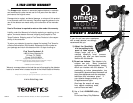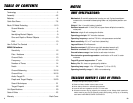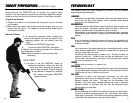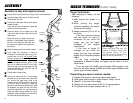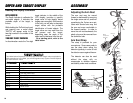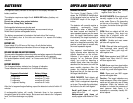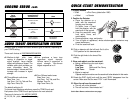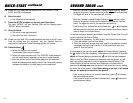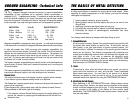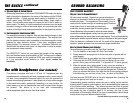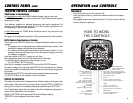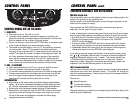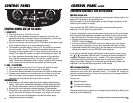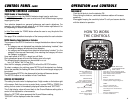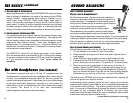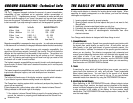
TERMINOLOGY
The following terms are used throughout the manual, and are standard
terminology among detectorists.
ELIMINATION
Reference to a metal being "eliminated" means that the detector will not
emit a tone, nor light up an indicator, when a specified object passes
through the coil’s detection field.
DISCRIMINATION
When the detector emits different tones for different types of metals, and
when the detector "eliminates" certain metals, we refer to this as the
detector "discriminating" among different types of metals.
Discrimination is an important feature of professional metal detectors.
Discrimination allows the user to ignore trash and otherwise undesirable
objects.
RELIC
A relic is an object of interest by reason of its age or its association with
the past. Many relics are made of iron, but can also be made of bronze
or precious metals.
IRON
Iron is a common, low-grade metal that is an undesirable target in certain
metal detecting applications. Examples of undesirable iron objects are
old cans, pipes, bolts, and nails.
Sometimes, the desired target is made of iron. Property markers, for
instance, contain iron. Valuable relics can also be composed of iron;
cannon balls, old armaments, and parts of old structures and vehicles
can also be composed of iron.
FERROUS
Metals which are made of, or contain, iron.
PINPOINTING
Pinpointing is the process of finding the exact location of a buried object.
Long-buried metals can appear exactly like the surrounding soil, and can
therefore be very hard to isolate from the soil.
PULL-TABS
Discarded pull-tabs from beverage containers are the most
bothersome trash items for treasure hunters. They come in many
different shapes and sizes. Pull-tabs can be eliminated from
detection, but some other valuable objects can have a magnetic
signature similar to pull-tabs, and will also be eliminated when
discriminating out pull-tabs.
GROUND BALANCE
Ground Balancing is the ability of the detector to ignore, or "see through,"
the earth’s naturally occurring minerals, and only sound a tone when a
metal object is detected. This Detector incorporates proprietary circuitry
to eliminate false signals from severe ground conditions
3
22
TARGET PINPOINTING
(in PINPOINT mode)
After you have identified a target using a motion mode of detection,
press-and-hold the PINPOINT pad to identify the target’s exact
location. This technique can yield more information about the target’s
shape and size and also find its exact location to facilitate extraction.
Pinpoint as follows:
1.
Position the search coil just barely off the ground, and to the side
of the target.
2. Now move the search coil slowly across the target, and you can
locate it by the sound. The target is located directly under where
the sound is loudest.
Narrow It Down:
1.
To narrow the response further, position the
center of the search coil near the center of the
response pattern, but not directly over the
center.
2. Release the PINPOINT touch pad.
3. Press-and-hold PINPOINT pad again.
4. Repeat this narrowing procedure to narrow the
field of detection further.
Note: Depth indication is less accurate after
narrowing.
COIL DRIFT
If you plan to use the PINPOINT mode for
continuous searching, realize that drift will
occur over time, causing the detector to
gain or lose sensitivity. Periodic retuning
of the detector is required to minimize
drift; release and press PINPOINT
again to retune.



